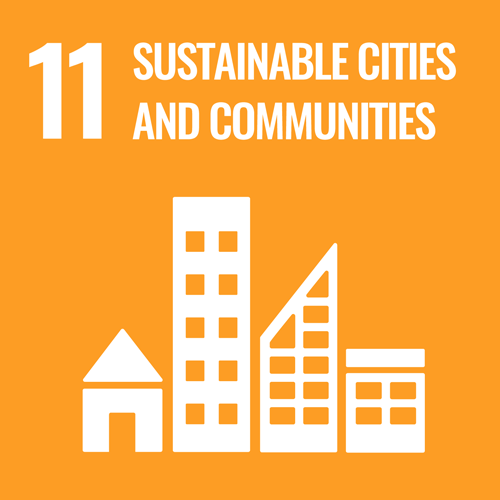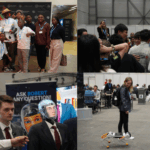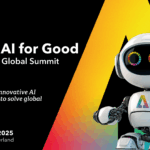
The UN-Habitat’s vision of “a better quality of life for all in an urbanizing world” is bold and ambitious. UN-Habitat works with partners to build inclusive, safe, resilient and sustainable cities and communities. UN-Habitat promotes urbanization as a positive transformative force for people and communities, reducing inequality, discrimination and poverty.
Description of Activities on AI
Project 1: Artificial Intelligence (AI) for Sustainable Urban Development in Cities
UN-Habitat is collaborating with Mila to produce a policy paper on the application of artificial intelligence in urban contexts. The paper takes a risk-based approach highlighting the risks of AI throughout its lifecycle and application in cities. The report first describes AI, its different types, the opportunities it offers for cities, and its current limitations. It identifies key sectors for intervention for cities, along with examples of AI applications within each of those sectors. The report then presents a detailed risk assessment framework with reflective guiding questions. Finally, the report offers a set of recommendations and areas of action to consider when developing an AI strategy.
Project 2: AI for people-centered smart cities workstream in the UN inter-agency working group on AI
In early 2022, a new workstream on AI for people-centered smart cities, co-chaired by UN-Habitat ITU, UNESCO, and UNDP, was established in the UN’s Inter-agency working group on AI. The objectives of the workstream are to understand the needs of cities and the capabilities of UN System organizations in relation to AI, and how to leverage AI for people-centered smart cities while promoting ethical guidelines for AI that are human-rights based, strengthening inter-agency cooperation, and implementing key performance indicators and other metrics to ensure that these values are respected. Currently, the project is kicking off a global assessment of responsible AI use in cities to map out the opportunities and constraints for local governments to responsibly use, implement and govern AI technologies in cities.
Project 3: BEAM: Building & Establishment Automated Mapper: Mapping informal settlement in eThekwini, South Africa
The city of eThekwini has the largest number of informal settlements of any municipality in South Africa. To keep track of the fast changes in the built environment and develop a pipeline of public service delivery and upgrading projects, it is essential that the city has access to evidence-based information. That requires up-to-date records, particularly on the scale, location, and number of informal areas.
To assist the eThekwini’s Human Settlement Unit (HSU) in automating their building mapping process, United Nations Technology Accelerator for Cities (UNITAC) developed BEAM, a model that uses machine learning to radically accelerate the spatial recognition of settlements and building structures on aerial imagery. BEAM can mark pixels specific to a building’s spectral profile with an accuracy of 94%. It looks to provide HSU with up-to-date geo-referenced base maps.
In addition to the tool development, there will be a technology and knowledge transfer component. This capacity-building process aims to enable the eThekwini Municipal Government to leverage BEAM to more effectively target their upgrading and basic urban service delivery interventions. A project advisory group has been established to address the BEAM’s potential risks, challenges, and opportunities.
Project 4: Hola ISUD plan (Integrated Strategic Urban Development Plan for Hola Town, Tana River County, Kenya)
UN-Habitat in collaboration with UNEP (UN Environment Programme) is committed to supporting the preparation and elaboration of the Hola ISUD, with a strong link between urbanization, biodiversity, and ecosystem services. The preparation of Hola ISUDP will form part of a larger territorial strategy: The Go Blue project, an Innovative Land-Sea Planning and Management for Sustainable and Resilient Kenyan Coast, which is a partnership between the EU (European Union) and the Government of Kenya to advance the blue economy agenda through coastal development. For the Hola ISUDP, AI was primarily used in the remote sensing process of extraction of land cover information from satellite imagery. Land cover is a key layer necessary to perform most of the GIS-based multicriteria analyses, helping to analyze a territory to detect historical changes and trends, particularly in a poor data environment, in which we mostly rely on information extraction from satellite imagery. The land cover layer was obtained through a supervised process of machine learning (considered as a subcategory of AI) applied to Copernicus Sentinel-2 imagery with 10 m resolution, by which the software is trained to recognize the different land cover classes (built up, tree cover, shrubland, agriculture, water, etc.). The creation of a high-quality land cover layer was critical to producing different analyses related to natural hazards like flooding vulnerability, drought potential, or land degradation, to take into consideration, among different other factors, the impact or influence of each type of cover on the specific hazard. Moreover, it was important for environmental assessments as biodiversity condition land cover change and ecosystem service value, as well as for multicriteria analyses aimed to assess the agriculture or urban development suitability. Therefore, we used two key open-source datasets originated through AI processes, to fill the data gap and to support different analyses and maps. The first one is the high-resolution density map provided by Facebook data for good in collaboration with CIESIN (Center for International Earth Science Information Network) of Columbia University. The map estimates the population at 30 x 30 m resolution for different categories (youth, elder, women, men). The data are generated by distributing the aggregate population data from the available census on building footprint and density extracted using advanced AI methodology. The data were used in the project to produce a population density map, to estimate the population affected by natural hazards, the amount of population served or unserved by public facilities, and to support strategic scenarios of growth and development. The second one is the open buildings dataset provided by Google, which produced a large dataset of 516 M buildings covering 64% of Africa extracted from high-resolution imagery in 2021, by applying AI. We used the buildings layer for different applications from the production of topographic maps to city scale and neighborhood strategic plans.







